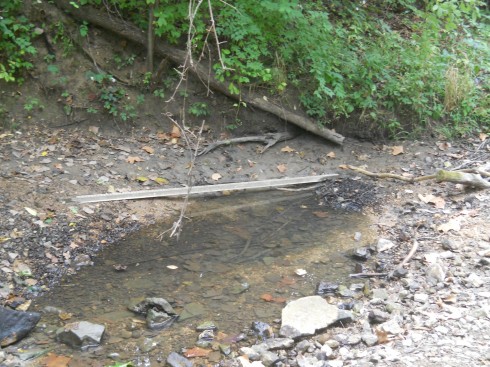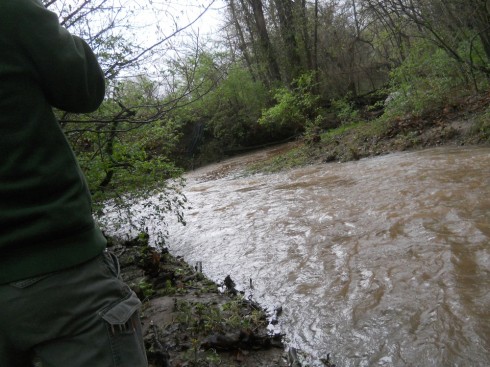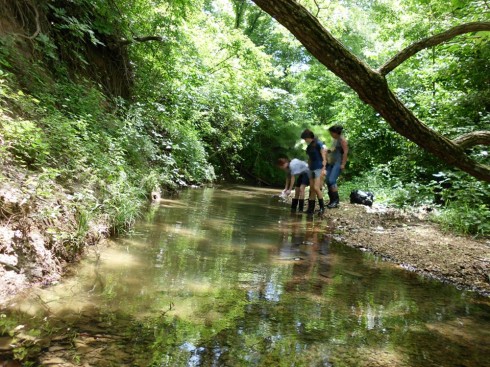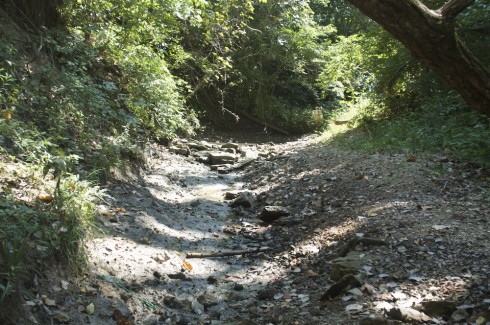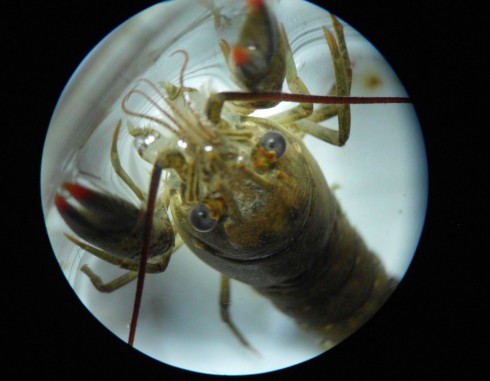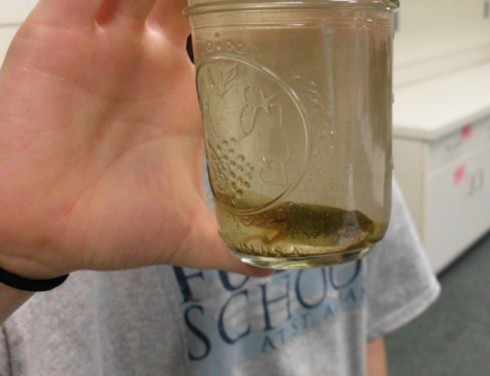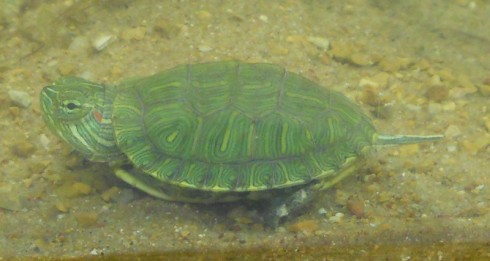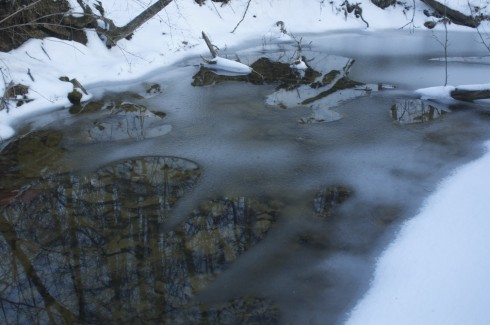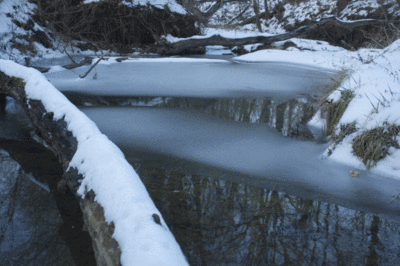
We talked about waves today down at the creek. The water was fairly calm so we could make some nice surface waves using floating leaves to show the up-down/side-to-side motion as the waves passed. I gave them 10 minutes to “play”, and more than one team tried to make a tsunami.

Since it’s allergy season, one student who could not go outside, read the chapter on the characteristics of waves and prepared a short–5 minutes–presentation for the rest of the class when we came back in.

